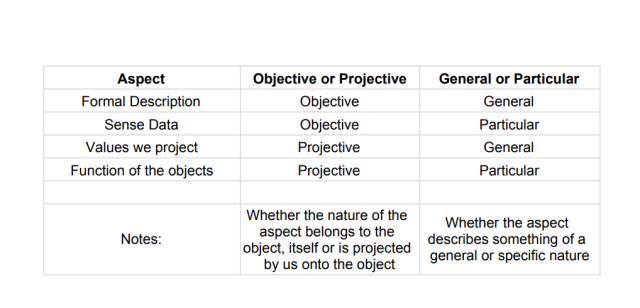
You have probably never heard of him. He was an engineer by training. He was the primary inventor and developer of the Bell helicopter, which made the promise of point to point flight a reality – though it had been discussed for centuries beforehand. This inventor, engineer and scientist was from an age when a few scientists could still challenge the overall approach of modern science – with its focus on the smaller and smaller, and lack of vision of the ‘whole’. They are almost gone as a species, so, in this series of posts, I’d like to pay tribute to Arthur M. Young and explain in non-technical language how important his work was… and is.
He was also, and unusually for a scientist, a master astrologer…
Despite being skilled in engineering and mathematics, Arthur Young returned to university as an adult to study Quantum Physics, recognising that here was something that completely altered the way we should visualise the world. He was fascinated by the consciousness potential of the relationship between the ‘observer’ and the ‘observed’, something that science had tried to ignore for centuries. This dismissal was brought up, sharply, by Quantum Theory, which proved that only the presence of the observer allowed the presence of the object to be ‘measured’. In other words, proved it was there… but not alone.
Helicopters make people nervous. They are heavy objects, oddly shaped and dangerous looking. When flying, they would plunge to the ground if the massive rotor, above, stopped working or broke. We can think of a plane as being safer because it has fixed wings that give it the theoretical capability of gliding back to Earth. Most of them don’t. For both planes and helicopters, the focus is on making sure that they are reliable and controllable in a failsafe way, and, for helicopters, that controllability is a very complex thing…
Given Arthur Young’s involvement in the development of the small, commercial helicopter, it’s not surprising that he was focussed on this central aspect of control. We will see, later, how this led to startling revelations that bridged physics and philosophy.
Consider the opening photograph. It shows an Art Deco style wall lamp, caught in a beautiful moment of rainbow colour coming into the living room from a clear winter’s day, outside. It has its own beauty, and that is what draws us to it. It has a complex shape that can be considered at differing levels of detail. Some of these details (properties) are objective – they can be measured by science and classified into such properties as material and shape.
Some of the properties are subjective – they only mean something to us – the observer. If I wanted to break down the ‘stages’ of knowing the wall-light lit by the rainbow, I might deliberately ignore the feeling of beauty and its minutely shifting colour, and examine only the overall form of the object. Its fundamental shape is an inverted triangle. I know enough about the delicate glass from which the ‘saucer-shaped’ leaves are made to be concerned that they are easily broken. With that small set of information, I feel I know the material content of the object; I could describe it to someone else and they would get a good picture in their minds.
The world of science is concerned only with this latter description: the inverted triangle – the form of the object, and the chemical material from which it is made. Arthur Young called this the formal description. Science is focussed on this level of knowing because is the only one that is objective: that is, not dependent on how we see something (bad mood, poor eyesight, colour-blindness, etc.) Using this formal description, science can categorise the object, and make it part of a common set of things – a very important process.
But the human, awakened to the form and beauty (or not) of the world around them, has a much richer experience. I understand the objective nature of the inverted triangle and the delicate chemical composition of the fragile leaves, but I’m staring in wonder at the texture of the glass and how it is reflecting the rainbow. I lean closer and find that the glass has a faint but definite smell to it. It’s clinical but not unpleasant.
These are subjective impressions. Science could never reproduce them because they belong to me, to you, to anyone with sense organs. We all experience these things differently, but we can try, with language, with photography, writing, art or poetry to convey that this is not simply an inverted triangle made of fine glass; it is a rich experience and unique in the entire history of the universe… You could experience something similar, but the fine details would belong only to each of us, differently–and they would change the event. We seldom consider this power we have – be a unique observer of the universal beauty all around us. We, whose bodies are made from the atoms created by ancient exploding stars, must come close to our zenith when we find such beauty and stop our everyday consciousness to ‘be’ with it.
Science is not deficient in its lack of concern for this; it’s simply that the full experience of the observer cannot be reduced to numbers… The collective mind that created numbers can never be subservient to them.
So far we have encountered the formal description of the object: the inverted triangle and the chemical properties of fine glass. We have also used our sense organs to experience the way the rainbow light shimmers on the petals of the lamp, and we have even smelled the glass. These sense impressions come from the object. They may be slightly different to each of us, but the properties from which they issue belong, also, to the object. Our object therefore possesses a formal description and specific sense impressions. The formal description could be shared, using shared language or mathematics, with anyone. The sense impressions could not, but could be likened to something else in our experience.
Step back and the experience of being an observer has two main aspects. There is a ‘me’ and an ‘it’. The experience of the wall lamp is deemed to be ‘out-there’, but the knowing resides ‘in-here’. I am helped, by the formal description, to recognise or locate the object, even if I’ve never been in that room.
Young said that, to realise the process and the power of knowing it is vital to (initially) separate our aspects of experience in this way. When we consider the received information and the sense data from the object, two more things happen in our perceptive mind. The first is that we place a value judgement on the experience – perhaps I am in awe of the beauty of the rainbow on the lamp. Without rationally considering it, I feel moved by an emotion, a kind of joy that this rare impression of living perfection is present.
The second ‘in-here’ aspect is the purpose of the object. In this case it’s not to show off rainbows, but to give light when evening comes. In other circumstances, my knowing of the lamp would have been part of the inventory of the capabilities of the room. Arthur Young named this the function. These two ‘in-here’ aspects belong to the observer, not to the object. We project them onto the experience based on our learning. Young called this kind of aspect projective, and the aspects belonging to the object, alone, he called objective. Where something in an aspect was specific, he used the term particular; where it had a shared nature, he named it general.
If we unravel the above example, there emerges a process of incremental perception which, conceptually, looks a lot like the opening of the famous Russian dolls:
- Aspect one, which is an inverted triangle shape, made of a chemical structure of fragile glass.
- Aspect two is the contents of the above plus the sense impressions belonging only to the objective nature of the inverted triangular shape (its colours, shades and smells)
- Aspect three is the subjective experience of all the above plus the feeling of beauty and awe I have when my attention and perception is captured by the occasion.
- Aspect four would be all the above plus the function of the wall-lamp, which, in this case, has been subverted by the unexpected rainbow… exactly what happens when we open ourselves to the possible in real life!
These four aspects therefore comprise: formal description, sense data, value and function. The first two are objective (‘out-there’), the second two (‘in-here’) are projective (subjective).
We can put these into a table for easier reference:

The creation of this was not a casual work. Arthur Young tested it against all the situations he knew of, in both a scientific and philosophical sense. He determined that it was a universal description, an ‘anatomy’ of how we perceive and how we ‘know’. These four stages – aspects – of knowing were at the heart of being human, they were not only the containers of what we learned, they were how we learned.
Four was an interesting number and features predominantly in the ancient mysteries. ‘Fourness’ is a key part of how mankind has conceived of the universal divisions of experience. Fourness is one of the keys to Astrology, in the form of the ‘Elements’ of Earth, Air, Fire and Water. For Arthur M. Young, an astrologer as well as a scientist, the notion of fourness at the centre of human experience was about to take him on a mind-expanding journey…
To be continued…
©️Stephen Tanham
Stephen Tanham is a director of the Silent Eye School of Consciousness, a not-for-profit organisation that helps people find a personal path to a deeper place within their internal and external lives.
The Silent Eye provides home-based, practical courses which are low-cost and personally supervised. The course materials and corresponding supervision are provided month by month without further commitment.
Steve’s personal blog, Sun in Gemini, is at stevetanham.wordpress.com.
You’ll find friends, poetry, literature and photography there…and some great guest posts on related topics.

Reblogged this on Not Tomatoes.
Thank you, Alethea 😎
Thank you, Sue x
Reblogged this on Jordy’s Streamings.